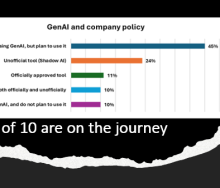Author: Rajen Nagar, at TechSoft International
South African companies are looking for ways to maximise their data footprint, eliminate traditional siloed approaches and provide users with a frictionless experience to extract valuable insights. The right data at the right time in the right form is an enabler for competitive advantage. Accomplishing this begins with accessing data regardless of its format and location.
This has seen the concept of the data fabric gaining momentum. A data fabric can be defined as a modern distributed data architecture that includes shared data assets and optimised data fabric pipelines needed to address data challenges in a unified way. Think of it as part of a cloth spread to cover where a company's users are. Regardless of their place in the fabric, the users can still access data at any location without constraints in real-time.
Fundamentally, it provides timely, consistent and trusted data for a range of analytic, operational and governance use cases. The data fabric also accesses, combines and transforms data, both in motion and at-rest, across the company's diverse, distributed data landscape. Finally, it flexibly spans distributed on-premises, hybrid and multi-cloud environments.
However, to get to the point where a data fabric is a business driver, decision-makers must first understand how their organisations approach data management. Adding complexity to this is the variety of available advanced and emerging data management technologies.
Virtualisation gateway
One of these is data virtualisation. Think of data virtualisation as software that acts as a bridge across multiple, diverse data sources. It brings critical data together in a virtual place to facilitate analytics. Considering how data is now the most distributed it has ever been across on-premises, hybrid and multi-cloud environments, leveraging data fabric and virtualisation technologies are what currently make business sense.
Getting access to all organisational data in a single, secure layer empowers business and technology leaders to develop actionable insights and act on them. In addition to the countless analytical, operational and emerging use cases resulting from data virtualisation, it helps to accelerate the business value by adopting analytical applications faster. Along with this, companies get more complete insights into their data while also getting the ability to reuse data services to avoid costly reworks of projects.
Without the proper building blocks in place, neither the data fabric nor data virtualisation can produce the intended analytical result. And this is where the data warehouse as a centralised repository that stores data from all areas of the business remains essential.
Getting the basics right
Just because a data warehouse is a central location and permanent storage space for all things data, it does not make it something easy to manage. If anything, the data warehouse can become a costly solution, especially when it is not appropriately managed at a time when data sources are spread around the world. The temptation might be there to replace a data warehouse with a data fabric or virtualised technologies, but for many local businesses who have invested extensively into their large-scale data warehouses, this is simply not an option.
Cloud migrations have shown that ripping and replacing existing technologies is not cost-efficient or even necessary, with many mission-critical systems still needing to be on-premises. The same applies to the data fabric and virtualisation. Certainly, these provide growth opportunities, but they are just additional tools in a growing data-driven value chain.
Furthermore, it is impossible to overstate the potential of cloud-based data warehousing in today's technologically advanced business environment.
Unlocking the cloud value
In fact, cloud data warehouses not only push for increased performance but also significant cost benefits. Take business intelligence as an example; managers and executives can access data from numerous sources no longer limited by data constraints to a specific location. And because the data warehouse is cloud-based, it can tap into the high-performance computing capabilities of the provider to fuel insights for any business department, including marketing, finance, operations and sales.
There is also the time-savings component to consider. A cloud-based data warehouse ensures employees can quickly access data using an integrated platform. By removing data siloes of many on-premises data warehouses, using the cloud allows for central data storage. With the right self-service capabilities, users can query the data themselves with little or no support from IT. If employees are no longer reliant on the technical team to generate reports, resources can be better allocated to deliver other, more strategic functions.
The historical intelligence contained within a traditional data warehouse can be taken to a new level by injecting cloud technologies into the environment. Therefore, large amounts of data spread over different time periods can be analysed to identify trends and make more accurate predictions.
This modern, cloud-enriched data warehouse brings with it increased data quality and consistency. Such an implementation includes converting data from numerous source systems into a standard format. Because the data from across the organisation is standardised, each department (and office) will provide results in line with one another. This consistency will ensure that the company can start embracing the likes of the data fabric and virtualisation into the process to help future-proof its data analytical footprint.















